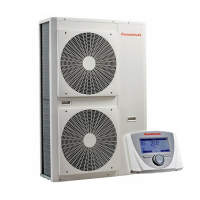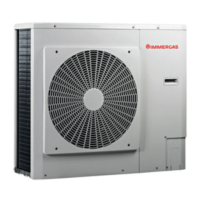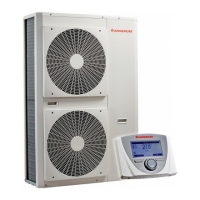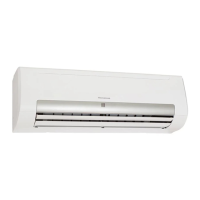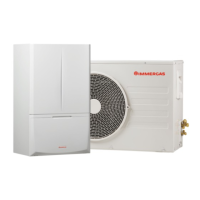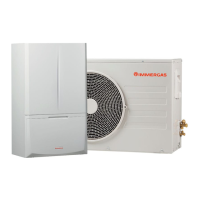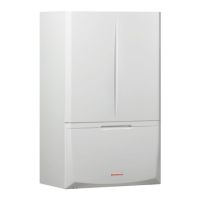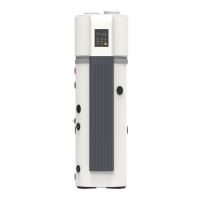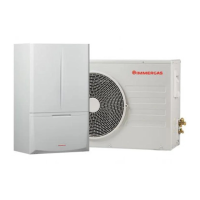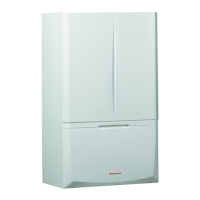5
1
INTRODUCTION
1.1 INTRODUCTION.
Before proceeding to initial startup of the Audax
Top 18-21 ErP units, the personnel in charge
must be familiar with these instructions and
technical installation data.
e Audax Top 18-21 ErP have been designed to
ensure a very high safety level, such to make
installation, start-up, operation and maintenance
easier and safer. If used within their elds of
application, they ensure a safe and reliable
service.
e machines are designed for an operational life
of 15 years, assuming a 75% utilisation factor;
which approximately corresponds to 100.000
hours of operation.
e procedures in this manual are organised in
the same order convenient to install, start,
manage or service these heat pumps.
Make sure you fully understand and implement
all the safety procedures and precautions
contained in the instructions provided with the
machine, as well as those listed in this manual,
which: personal protective equipment, such as
gloves, goggles, safety shoes, suitable tools,
appropriate skills and qualications (electricity,
air conditioning, local legislation).
The conformity of these products with the
European Directives (safety of machinery, low
voltage, electromagnetic compatibility, under
pressure equipment, etc.) can be ascertained by
consulting their declaration of conformity.
1.2 SAFETY.
1.2.1. Considerations about the safety of
installation.
The unit must be carefully inspected once it
reaches the site and before it is put into operation.
In particular, make sure that the cooling circuits
are intact and that no component is deformed or
damaged, for example due to a bump. If in doubt,
perform a leak test. If upon arrival the unit is
found to be damaged, it is essential to immediately
submit a written complaint to the carrier.
is appliance may be used by children of 8 years
or over, and by adults with impaired physical,
sensory or mental abilities, or those inexperienced
or ignorant on the subject if they are properly
supervised or if they have been given instructions
about the safe use of the appliance, and made
aware of the associated risks.
Children must be constantly supervised to ensure
they do not play with the appliance.
Do not remove the pallet or packaging before
the unit reaches the nal installation position.
ese devices can be moved by means of forkli
truck, provided that the forks are inserted only
in the positions indicated on the appliance
itself.
It is also possible to li the units by means of
specic slings (see Par. 2.2).
erefore, to perform liing they must be
harnessed with strong ropes and always strictly
follow the liing instructions stated in the
certied drawings for the appliance.
Safety is only guaranteed provided that such
instructions are strictly followed. Otherwise,
there would be a risk of ruining the material
and injuring the personnel in charge of carrying
out such operations.
NEVER COVER THE SAFETY DEVICES.
e above applies to any fuse caps and safety
valves present in the cooling and heat transfer
uid circuits. Also ensure the presence of caps
on the safety valves outputs. ese caps are
made of plastic and must not be reused. If still
present, remove them. It is essential to install
devices on the outputs of the safety valves or
on the free ends of the drainage lines possibly
connected to them, that inhibit the penetration
of foreign bodies (dust, debris, etc.) and/or of
rainwater that may cause the formation of rust
or ice caps. Just like the drainage lines, these
devices must not prevent operation or cause
head losses in excess of 10% of the controlled
pressure.
Classication and control
In accordance with Pressure Equipment
Directive and EU regulations on monitoring
and use at national level, the protective devices
of these machines are classied as in table 1-1:
Do not remove the valves and fuses, not even
for those plants where the risk of re is under
strict control. is is due to the fact that there
would be no guarantee that these accessories
would be reassembled in case of change in the
system features or transport of the gas load
appliance.
Should the unit be subject to re, the safety
devices prevent breakage due to the overpressure
releasing the coolant. erefore, the uid can
be decomposed in toxic residues when subjected
to ame, and therefore:
• Keep away from the unit.
• Set warnings and recommendations for
personnel to stop a re.
• e re extinguishers suitable for the system
and type of coolant must be easily accessible.
All factory-installed pressure relief valves
are sealed to prevent any alteration in their
calibration.
e drain valves must be periodically checked.
See Par. 1.2.4. “Considerations about the safety
of repair interventions”.
Provide a drain ditch in the drain circuit, in
the vicinity of each drain valve, to avoid an ac-
cumulation of condensate or rainwater.
e coolant must be handled carefully fol-
lowing all legislation requirements locally
applicable.
e accumulation of coolant inside an enclosed
space could decrease the oxygen and cause suf-
focation or explosions.
e inhalation of high concentrations of va-
pour is harmful and may cause heart failure,
loss of consciousness or death. Being heavier
than air, the steam reduces the amount of
oxygen available for breathing. ese products
cause eye and skin irritation. Decomposition
products can be hazardous.
Intervention
Name of technician
responsible for
commissioning
National
regulations
applicable
Verication
body
Date
Type of
intervention
(1)
(1) Maintenance, repairs, regular checks (EN 378), leaks, etc.
1-1

